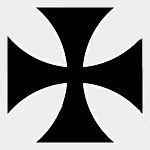Corgi AA38304 German Fokker Dr.1 Triplane Fighter - Ritt. Manfred von Richthofen, Jagdgeschwader 1, Lechelle Airfield, France, March 1918 (1:48 Scale)
"The important thing in aeroplanes is that they shall be speedy."
- Baron Manfred Von Richthofen
 The Fokker Dr.I Dreidecker (triplane) was a World War I fighter aircraft built by the company of Anthony Fokker, and designed by Reinhold Platz. It became most famous as the plane of the Red Baron, Manfred von Richthofen.
The Fokker Dr.I Dreidecker (triplane) was a World War I fighter aircraft built by the company of Anthony Fokker, and designed by Reinhold Platz. It became most famous as the plane of the Red Baron, Manfred von Richthofen.
In April 1917, the Royal Naval Air Service (RNAS) introduced the Sopwith Triplane. Their debut was sensational and they swiftly proved to be superior to the Albatros and Halberstadt scouts then in use by the German Air Service. Soon the German pilots were clamouring for a triplane of their own. The majority of the German aircraft manufacturers, including Pfalz, AEG, DFW, Schutte-Lanz, and Euler, responded with new triplane designs. Most displayed little promise, though limited production of the Pfalz Dr. I was undertaken.
Fokker responded with the V.3, a small rotary-powered triplane with a tubular steel frame fuselage and thick cantilever wings. Fokker found several deficiencies in the V.3, particularly regarding control forces. Instead of submitting the V.3 for a type test, Fokker produced a revised prototype designated V.4. The most notable changes were horn-balanced ailerons and elevators, as well as wings of increased span. The V.4 also featured interplane struts, which were not necessary from a structural standpoint, but which had the effect of minimizing wing flexing. The V.4 proved highly manueverable and much superior to the triplane prototypes submitted by other manufacturers. The rudder and elevator controls were powerful and light. Rapid turns were facilitated by the triplane's directional instability. The ailerons were also light, but not very effective.
After a type test, an immediate production order ensued. The V.4 prototype was intentionally destroyed in static structural tests. The two pre-production examples, designated F.I, were delivered in the middle of August 1917. These were the only machines to receive the F.I designation. Delivery of production machines, designated Dr.I, commenced in October of that year.
Pictured here is a 1:48 scale replica of a German Fokker Dr.1 triplane fighter that was piloted by Ritt. Manfred von Richthofen, who was attached to Jagdgeschwader 1 during March 1918.
Sold Out!
Dimensions:
Length: 6-inches
Wingspan: 7-1/2-inches
Release Date: May 2011
Historical Account: "The Flying Circus" - The Jagdgeschwader 1 (JG 1) of World War I, was a fighter unit comprising four Jastas or 'fighter squadrons', originally raised by combining Jastas 4, 6, 10 and 11, on 24 June 1917 with Manfred von Richthofen as commander. JG 1 became known as "The Flying Circus" or "Richthofen's Circus" because its fighter planes were painted in bright and distinctive color schemes for easy identification during dogfights.
Although best known for the all red triplane in which he was eventually shot down and killed, Richthofen actually flew several different triplanes. Fokker Dr1, serial number 152/17, was the aircraft in which he scored victories sixty-four, sixty-five and sixty-six. Only partially painted in the Baron's colours, this aircraft boasted a red cowling, wheel covers, upper wing, struts and rear fuselage.
Following the Armistice DR1 152/17, as one of the few surviving Fokker triplanes, was used as a centerpiece display in Berlin's Zeughaus Museum. With the bombing of Berlin during World War Two, the aircraft was evacuated east to Poland for safety but was lost and its fate still remains unknown to this day.


